Lithium-ion batteries are the predominant type of rechargeable battery used to power the devices and vehicles that we use as part of our daily lives. Lithium-ion batteries are in used in many locations throughout the ΒιΆΉΤΌΕΔ.
The batteries vary in size and configuration depending on their use and application. Larger batteries may be found in Energy Storage Systems (ESS) and vehicles whilst smaller batteries are used in laptops and mobile phones with lots of intermediate applications. Batteries are arranged in series to increase voltage, and in parallel to increase capacity.
Fortunately, fire related incidents with these batteries are infrequent, but the hazards associated with lithium-ion battery cells, which combine flammable electrolyte and significant stored energy, can lead to a fire or explosion from a single-point failure. These hazards need to be understood in order to suitably manage lithium-ion battery risks.
What do they look like ?
There are four basic styles of Lithium-ion rechargeable batteries: cylindrical, button, prismatic, and pouch cells. The cylindrical and button formats are inherently more robust than flat-format prismatic and pouch cells due to the structural properties of their shaped metal casings.
Prismatic and pouch cells are made up of many flat positive and negative electrodes sandwiched together. There are greater possibilities for deformation, short circuit, and irregularity with this arrangement when compared with cylindrical or button cells, that can lead to thermal runaway conditions. Pouch cells have outer surfaces made from flexible materials (e.g. aluminium-plastic composite film) and have the least mechanical resistance of these formats.
What are the hazards?
If a battery cell creates more heat than it can effectively dissipate, it can lead to a rapid uncontrolled release of heat energy, known as βthermal runawayβ, that can result in a fire or explosion.
This typically develops through the following events:
1. Temperature increase
2. Venting/gassing off of flammable/toxic electrolyte vapours
3. Flare
4. Steady burn
5. Flash fireball
6. Explosion
Ways that thermal runaway can start in batteries are;
β’ Damage to the battery
β’ Manufacturing defects
β’ Overcharging
β’ Over-discharging
β’ Short circuiting
β’ Water ingress
β’ Incorrect use of charger
β’ Poor quality battery β cell faults
β’ Poor condition of battery β cell faults
β’ Age of battery
Using Lithium-ion batteries safely
β’ Only use batteries purchased from a reputable manufacturer or supplier.
β’ Do not leave/store batteries in contact with conductive materials.
β’ Always inspect batteries for any signs of damage before use and never use damaged or defective batteries.
β’ Only charge batteries with a suitable OEM (original equipment manufacturer) or compatible charger designed to safely charge the specific battery cells or battery packs in use.
β’ Do not leave batteries charging in unoccupied locations and disconnect/remove batteries from chargers after charging is complete. Remember e-bikes & e-Scooters must only be charged in
β’ Handle batteries in well-ventilated areas and only use and store batteries in dry and reasonably cool locations, i.e. avoiding excessive humidity and heat. Avoid placing batteries in direct sunlight.
β’ Keep battery handling areas free from flammable or combustible materials, and free from sharp objects that may puncture battery cells.
β’ When not in use, lithium-ion batteries should ideally be kept in a bespoke enclosure such as a proprietary metal battery storage cabinet or fireproof safety bag.
Safe Disposal
β’ Because of their potential for starting a fire, Lithium-ion batteries should not be disposed of in ordinary waste bins, or the Workplace battery recycling tubs.
β’ Do not mix Li-ion batteries with other batteries
β’ Tape the terminals, prior to contacting Workplace for disposal
β’ Any one who needs to dispose of a Lithium β ion battery, should arrange safe disposal by contacting the
Further Information on disposal is contained in the Managing Waste Batteries guidance document - see Useful Documents
Useful documents
-
(ΒιΆΉΤΌΕΔ Network only)
-
[ΒιΆΉΤΌΕΔ Network only]
-
[ΒιΆΉΤΌΕΔ network only]
Recommended links
-
Guidance on Lithium-ion Battery Use and Storage
-
Li-ion battery fires
-
Guidance on air transport of production batteries
-
Reduce Batteries
-
Minimise the risks involved when working with batteries
-
Passenger carriage of Li-ion batteries on BA aircraft
-
UK's Civil Aviation Authority guidance for lithium batteries as cargo and as passenger luggage
-
US federal Aviation Administration rules on carriage of lithium batteries
-
International Air Transport Association guide - covers transport of batteries by air cargo
ΒιΆΉΤΌΕΔ electrical safety topics
-

Electrical safety homepage
A selection of guidance documents and general advice in relation to Electrical Safety in ΒιΆΉΤΌΕΔ premises, on productions and events. -

ΒιΆΉΤΌΕΔ policies for electrical safety
ΒιΆΉΤΌΕΔ policies detailing its overarching approach to the management of electrical safety. -

ΒιΆΉΤΌΕΔ electrical safety guidance documents
Summary of ΒιΆΉΤΌΕΔ electrical guidance (links within document titles) -
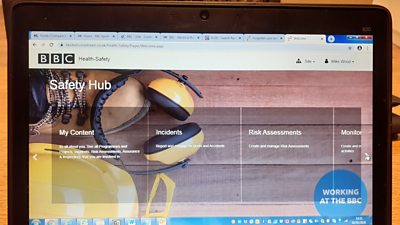
Electrical risk assessments and reporting of incidents
This section will help those who need to do a risk assessment where electricity is being used. It also gives guidance on reporting requirements for any electrically-related incident. -

Electrical safety in ΒιΆΉΤΌΕΔ Premises
General guidance on use of electricity and electrical equipment when working in ΒιΆΉΤΌΕΔ Premises. -
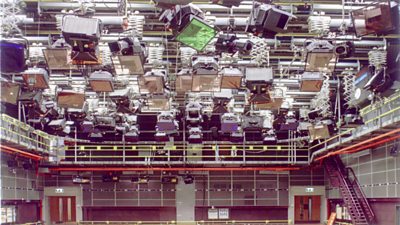
Electrical safety in Studios
A straightforward guide to electrical safety management in studios and similar locations. -

Safety of electrical equipment and appliances
Requirements for electrical safety of electrical equipment and appliances (βPAT testingβ). -
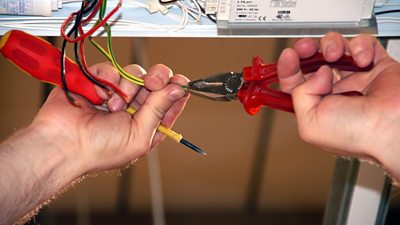
Electrical competency and Part P requirements
Guidance on what to look for when employing contractors or freelancers to do electrical work. -

Electrical safety requirements for Production Managers
Find out what you should know and what measures should be put in place for your production. -

Bringing your own equipment to work and contributorβs equipment
Basic guidance on the safe and appropriate use of personal electrical equipment whilst at work and requirements. -
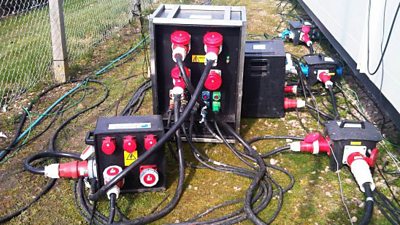
Temporary electrical systems and BS 7909
Requirements for electrical safety management in accordance with BS 7909 for all temporary electrical systems. -

Small and Simple Temporary Electrical Systems
Guidance to help understand the requirements for simple temporary electrical systems such as interviews or photo shoots for example. -
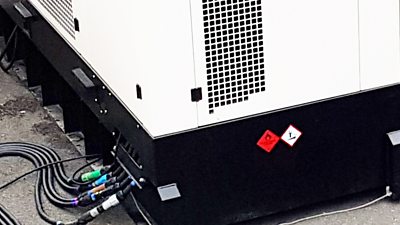
Generators
Guidance on the use of temporary generators including the application of earth electrodes. -
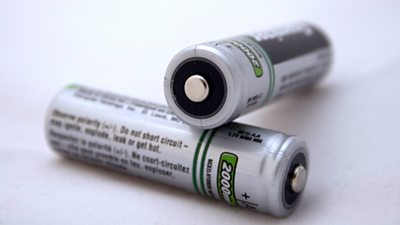
Batteries on Productions
Guidance on the safe use and storage of batteries. -
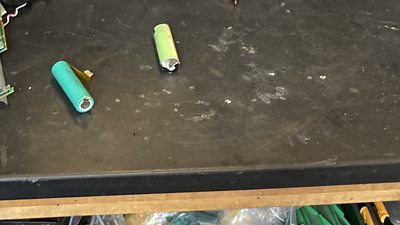
Lithium (Li-ion) Batteries
A guide on the safe use of Lithium Ion batteries -
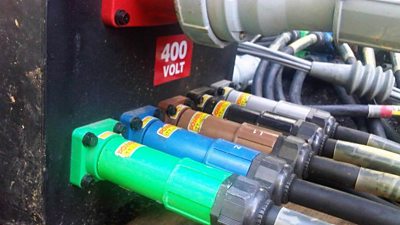
Certificate in Temporary Electrical Systems
An electrical safety training course designed to ensure those working with electricity in temporary distribution systems on productions can comply with BS 7909 and the relevant parts of BS 7671. -
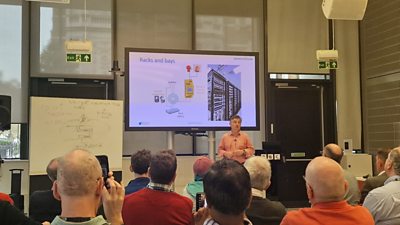 Electrical Principles Workshop to harmonise the approach to health and safety management on electricity across all areas.
Electrical Principles Workshop to harmonise the approach to health and safety management on electricity across all areas. -

External information and guidance on electrical safety
Links providing further information on all aspects of electrical safety, from external bodies (IET, HSE, Etc.) that ΒιΆΉΤΌΕΔ staff may find useful. Some guidance is required to be purchased. -

Health & safety Alerts and News
All the Health & Safety Alerts and News from the H&S Teams
More from SSR
-
Your platform to record accidents, risk assessments, assurance monitoring and inspections
-
Safety Equipment Stores
Just one number to call: 020 3614 5155 -
ΒιΆΉΤΌΕΔ Safety Guidelines
An A-Z of ΒιΆΉΤΌΕΔ's Health and Safety Guidelines -
Safety Advice Line: 0370 411 0464 Email: safety@bbc.co.uk
- A-Z of ΒιΆΉΤΌΕΔ Safety Guidelines
- Accident Reporting and Investigation
- ΒιΆΉΤΌΕΔ Health & Safety Policy
- Contractors (incl. vetted lists)
- Contributors
- Fire Safety
- Freelancers
- Independent Production Companies
- Risk Assessment
- Safety Alerts
- Safety Responsibilities
- Safety Training
- Sets & Premises Safety Guide
Events guidance - key links:
- Exhibitions
- General Guidance
- Indoor Location Recce Checklist
- Outdoor Location Recce Checklist
- Major Incidents & Emergency Planning
- Marketing and Promotional
- Noise Exposure
- Planning and Management
- Responsibilities
- Responsibilities Form
- Laser Lighting Effects
- Strobe Lighting
- Temporary Stages and Rostra
Health topics - key links:
- (ΒιΆΉΤΌΕΔ network only)
- Contributors Fitness to Participate
- Display Screen Equipment (DSE)
- (ΒιΆΉΤΌΕΔ network only)
- First Aid and Welfare on Location
- International Travel - Risks & Health
- Manual Handling
- Mental Health: ΒιΆΉΤΌΕΔpage
- (ΒιΆΉΤΌΕΔ network only)
- Personal Health and Wellbeing
- Pregnancy
- Psychological Trauma Support & Trauma Risk Management (TRiM)
- Tiredness and Fatigue
- Travel Health Contacts
ΒιΆΉΤΌΕΔ High Risk - key links:
- CBRN and Industrial Spills
- Covert Filming
- Crisis Management and Security Support
- Demonstrations, Protests and Crowds
- Disaster Coverage
- Door Stepping
- (ΒιΆΉΤΌΕΔ network only)
- (ΒιΆΉΤΌΕΔ network only)
- Public Order
- Safety Equipment Stores
ΒιΆΉΤΌΕΔ Journalism - key links:
ΒιΆΉΤΌΕΔ Productions - key links:
- Aerial Filming and Airfields
- Animals: Displaying and handling for performance
- Boats: Working on
- Children and Young People
- Driving
- Electrical Equipment and Systems
- First Aid and Welfare on Location
- Food Safety (Cooking and Catering)
- Remote Location Working
- Roads and Streets: Working by
- Security of Productions on Location
- Stunts
- Tiredness and Fatigue
- Unmanned Aerial Systems (UAS aka Drones)
- Vehicles: Recording in, from and around
- Working at Height: Mobile Elevating Work Platforms
- Working at Height: Tower Scaffolds
ΒιΆΉΤΌΕΔ Radio - key links:
- (ΒιΆΉΤΌΕΔ Network only)
ΒιΆΉΤΌΕΔ Security - key links:
ΒιΆΉΤΌΕΔ Sport - key links:
About this site
This site describes what the ΒιΆΉΤΌΕΔ does in relation to managing its health, safety and security risks and is intended for those who work directly for the ΒιΆΉΤΌΕΔ.
It is not intended to provide instruction or guidance on how third parties should manage their risks. The ΒιΆΉΤΌΕΔ cannot be held liable for how this information is interpreted or used by third parties, nor provide any assurance that adopting it would provide any measure of legal compliance. More information
Some links on this site are only accessible when connected to the ΒιΆΉΤΌΕΔ network
